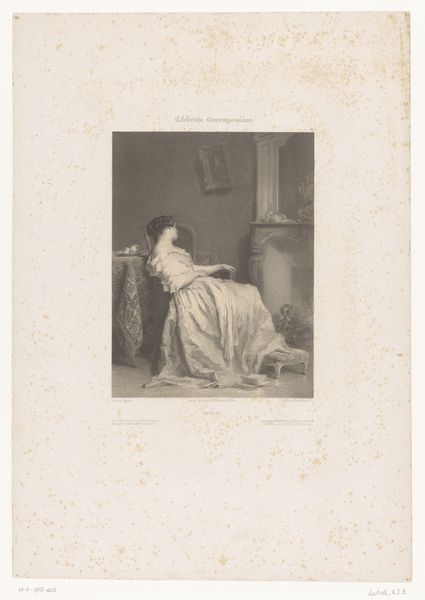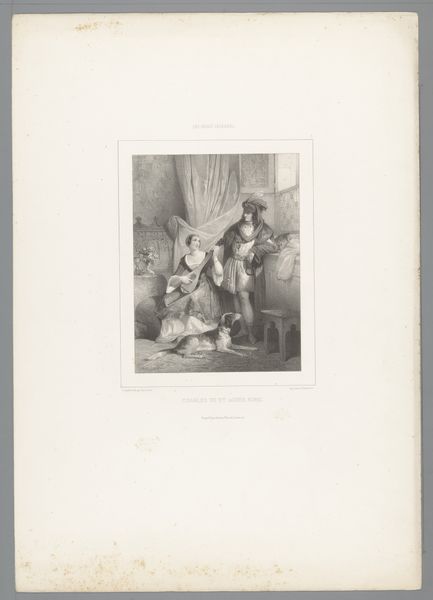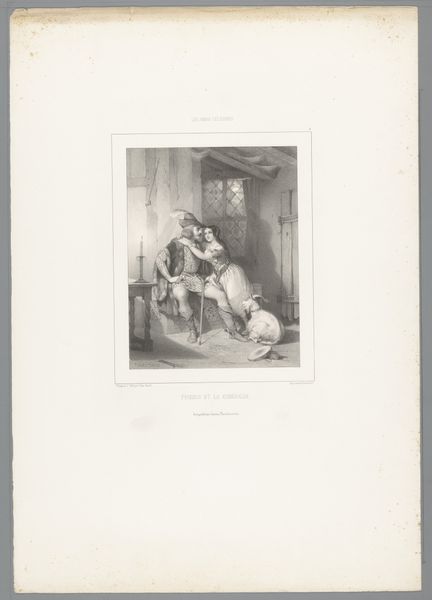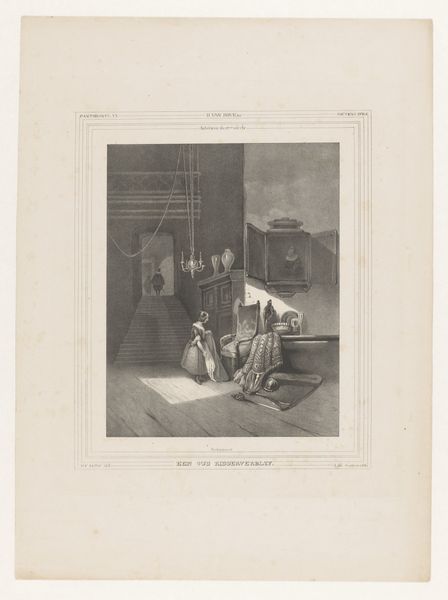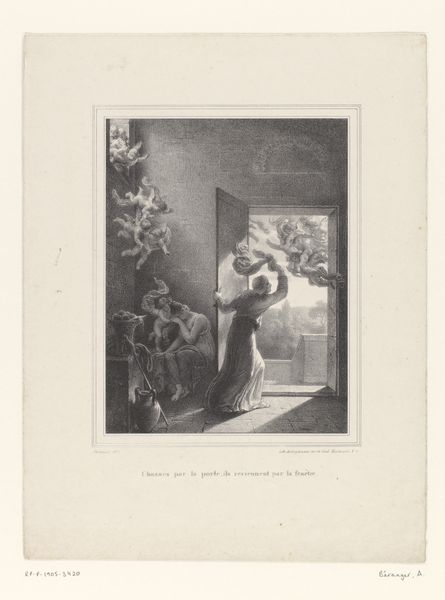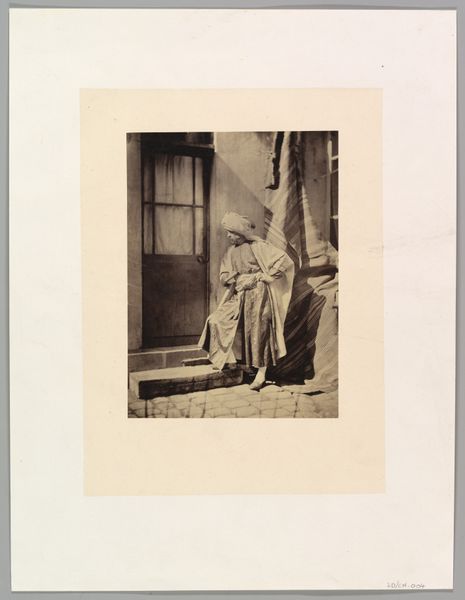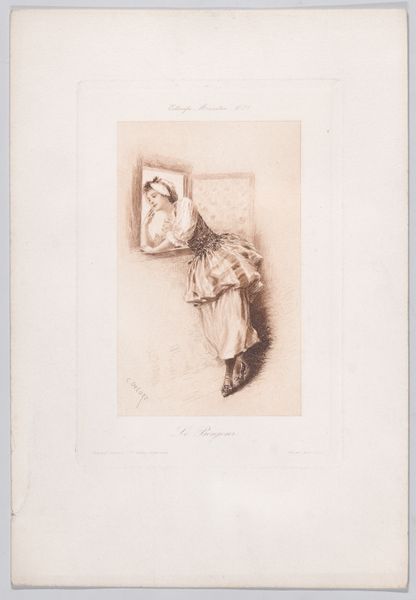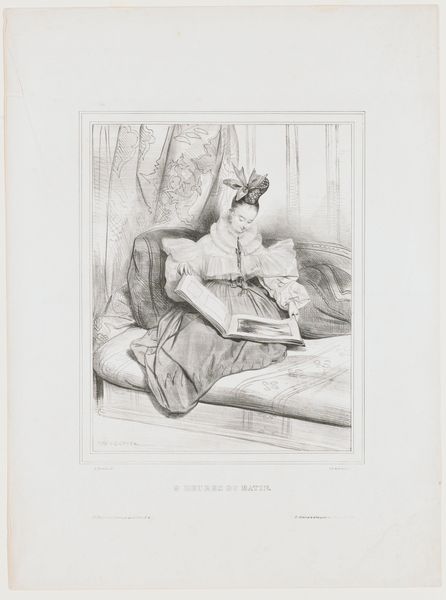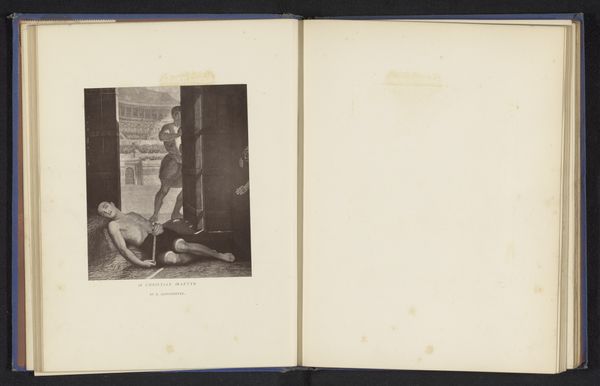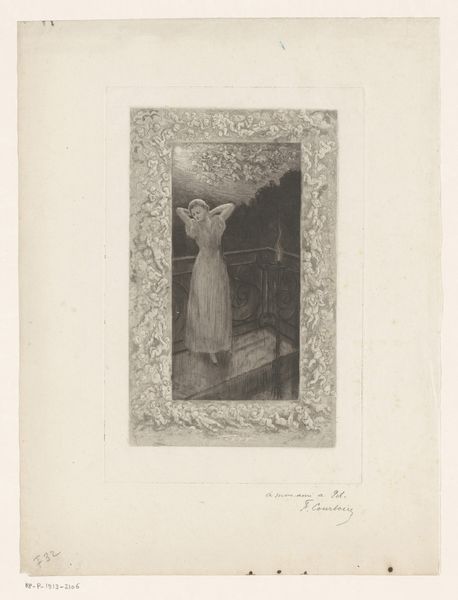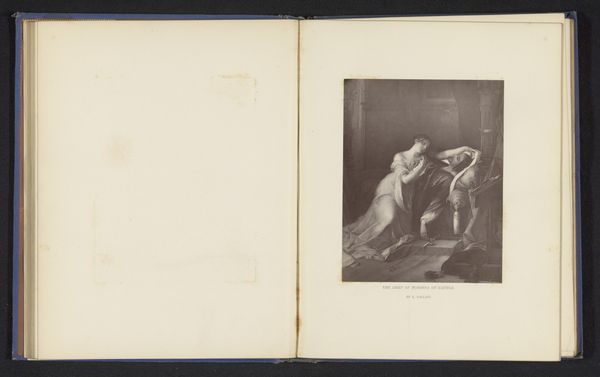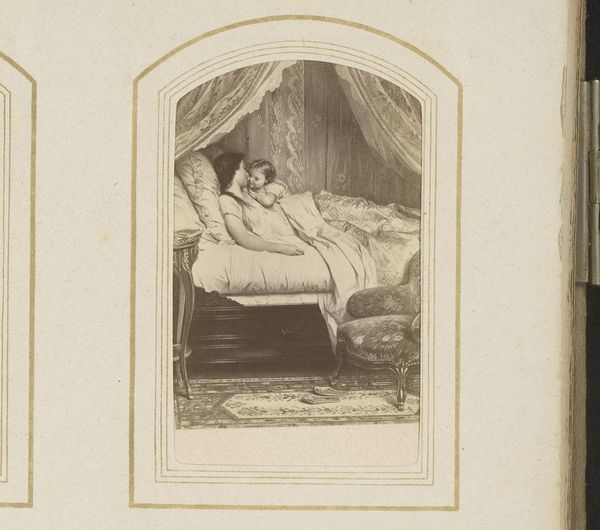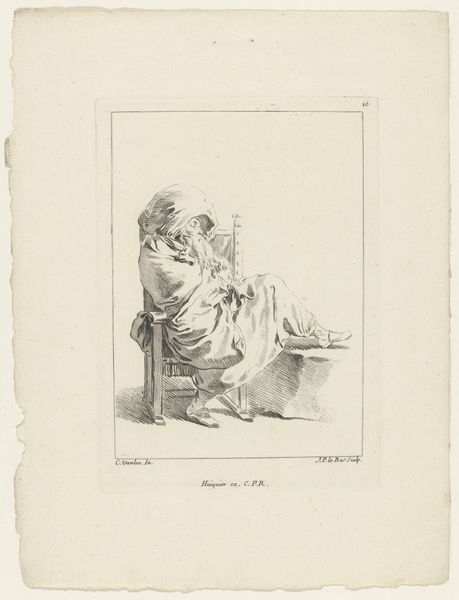
Deel van het monument van Maria Christina van Oostenrijk in de Augustinerkirche te Wenen c. 1875 - 1900
0:00
0:00
Dimensions: height 288 mm, width 226 mm
Copyright: Rijks Museum: Open Domain
Curator: Here we have a photograph, probably dating from around 1875 to 1900, documenting a portion of the memorial to Maria Christina of Austria. This elaborate monument is found within the Augustinerkirche in Vienna, built by M. Frankenstein & Co. Editor: The overriding feeling for me is one of profound melancholic grace. The angel, so classically rendered, seems to almost weep onto that stoic, recumbent lion. There's an intense tenderness mixed with regal sadness. Curator: Indeed. The sculpture itself, executed in marble, is a quintessential example of Neoclassical style, prevalent during the late 18th and early 19th centuries. It embodies a revival of classical forms and ideals, mirroring a sense of order and reason. We should remember that Neoclassicism was closely associated with periods of significant social and political upheaval, especially with revolution and the rise of empires. Editor: Right, I immediately read that. And the iconography is carefully considered. Lions are linked to powerful ideas about monarchy, royalty, nobility, stateliness, pride, dignity, as well as the embodiment of courage. So a connection exists, even in stillness, between Maria Christina’s worldly power, represented by the Lion and her more peaceful heavenly ascendance, symbolized by the youthful winged personage. It speaks of a transition from earthly power to eternal serenity. Curator: And that contrast was likely intended to legitimize Hapsburg power during a difficult transition towards modernity, with nods to tradition serving to anchor claims of dynastic authority. We see this frequently within imperial visual programs, intended for a large public, from statuary and civic buildings to international expositions. Editor: Note also that downcast gaze. The angel has closed its eyes and inclines toward the lion, in recognition of death. That action is not about turning away; it represents grace and mercy, as well as a symbolic moment of apotheosis, an ascension or elevation into some form of glorified position. Curator: Fascinating how even within a relatively small excerpt of the entire memorial, we can read layers of cultural messaging tied to family lineage, imperial power, and eternal life! Editor: Exactly. This image showcases how, even in static form, symbolic figures connect the earthly and ethereal, reminding us of the narratives cultures build around death and remembrance.
Comments
No comments
Be the first to comment and join the conversation on the ultimate creative platform.
